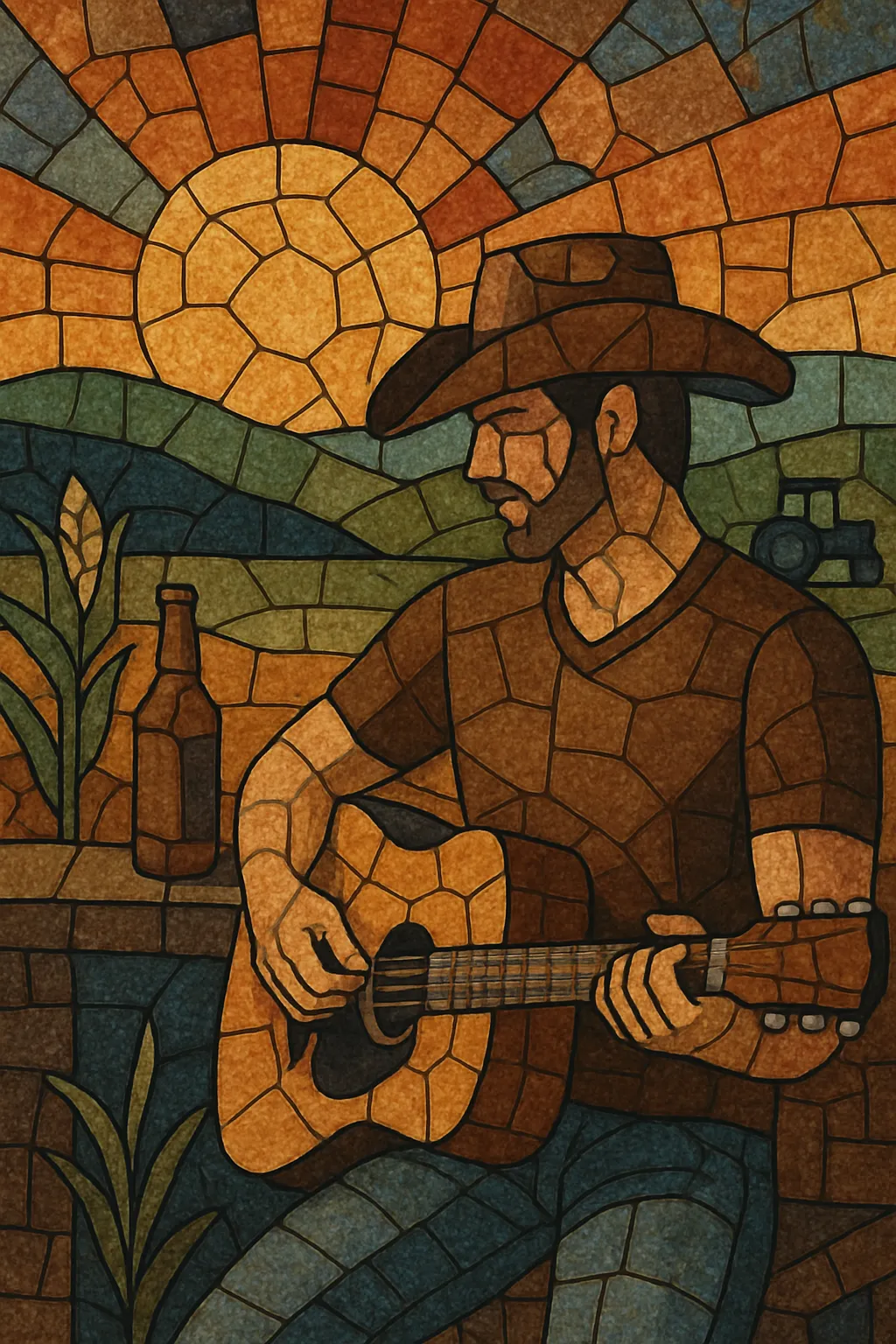
Bro-country is a commercially oriented subgenre of contemporary country music that blends radio-friendly country with pop, rock, and hip-hop production tropes. It is typified by party-ready choruses, glossy, high-gain electric guitars, sub-bass and programmed drums, and hook-first songwriting aimed at arena and festival stages.
Lyrically, the songs often revolve around small-town escapism, pickup trucks, tailgate parties, summertime romance, beer brands, and uncomplicated good times, frequently told from a male, first-person perspective. Vocals commonly employ talk-singing, light rap cadences, or chantable gang hooks, while harmonies stay simple and consonant. The overall affect is upbeat, celebratory, and instantly memorable, designed for mass sing-alongs and high streaming/radio rotation.
The seeds of bro-country were planted in late-2000s mainstream country as artists adopted louder guitars, bigger drums, and pop-forward hooks. These aesthetics converged with country rap crossovers and the growing influence of hip-hop rhythms on Nashville production.
The term “bro-country” was popularized in 2013 by critic Jody Rosen to describe a wave of male-led, party-centric hits dominating country radio. Florida Georgia Line’s Cruise (2012, and the 2013 Nelly remix) provided a definitive sonic template: arena-sized choruses, half-time drums with hip-hop swing, bright major-key harmony, and lyrical imagery focused on trucks, dirt roads, and carefree romance. Luke Bryan, Jason Aldean, Brantley Gilbert, Jake Owen, Cole Swindell, Thomas Rhett, and others propelled the sound to multi-platinum status and arena ubiquity.
By 2014–2015, saturation prompted cultural pushback for lyrical sameness and gender imbalance, highlighted by Maddie & Tae’s satirical Girl in a Country Song (2014). Simultaneously, some acts folded in R&B, EDM, and more nuanced storytelling, broadening the palette. Cross-genre smashes like Bebe Rexha & Florida Georgia Line’s Meant to Be (2017) signaled pop’s deep integration with contemporary country.
Bro-country reshaped Nashville’s production playbook, normalizing 808s, loop-based writing, chant hooks, and co-writes with pop/hip-hop producers. Even as the tag faded, its sonic DNA—big choruses, beat-driven grooves, and lifestyle-brand imagery—continues to inform mainstream country and its crossover ambitions.
Use bright, major-key centers (G, A, D, or E major) with simple 4-chord loops such as I–V–vi–IV or I–vi–IV–V. Aim for tight, radio-ready song forms: intro – verse – pre-chorus – chorus – verse – pre-chorus – bigger chorus – bridge or breakdown – final chorus with ad-libs.
Target midtempo feels in the 80–105 BPM range, often with a half-time backbeat (snare on beat 3) for hip-hop weight. Layer live kit grooves with programmed claps, 808 or sub drops, and occasional EDM-style risers into the chorus. Sidechain compression and tom builds can heighten pre-chorus tension.
Blend overdriven electric guitars, acoustic strums, and bright mandolin/banjo textures with modern pop elements: synth pads, subtle arps, and sub-bass. Keep bass lines supportive and locked to the kick. Double or triple-track rhythm guitars for width, and add gang vocals or shout layers to make hooks stadium-ready.
Write conversational, hook-forward melodies with easy, repeatable phrases. Mix melodic singing with talk-singing or light rap cadences in verses. Lyrics should paint vivid lifestyle scenes—tailgates, dirt roads, summer nights, cold beer, and flirtatious encounters—using brand/place specifics and accessible slang. Keep imagery upbeat and celebratory.
Compress vocals cleanly, brighten with gentle top-end EQ, and add short slap or plate verbs for presence. Use stereo widening on guitars and pads; keep kick, bass, and lead vocal centered. Make the chorus feel larger via octave doubles, extra guitar layers, and stacked harmonies, ensuring the topline remains crystal clear.

